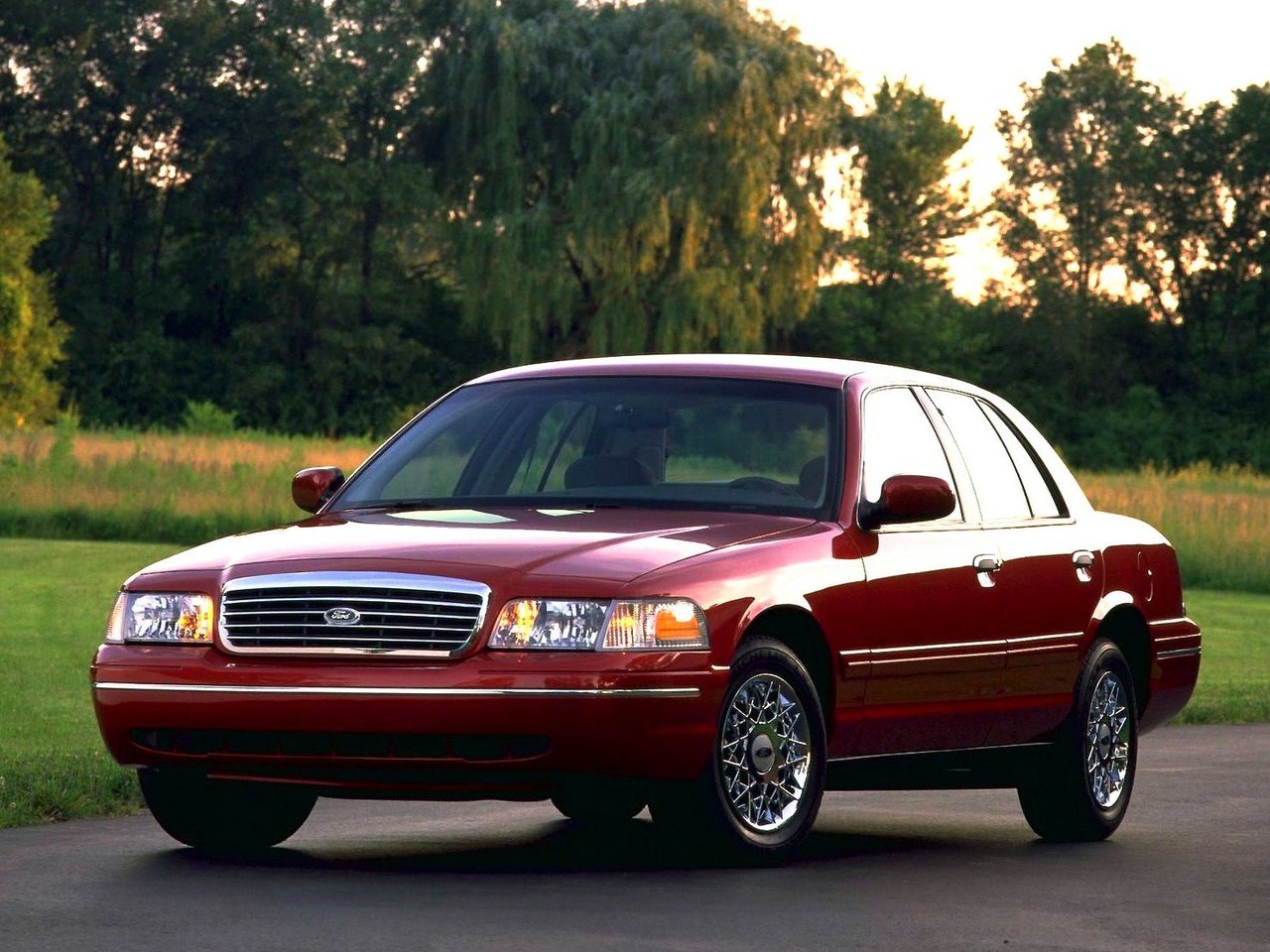When it comes to driving, there’s a huge difference between a car that technically works and one that feels genuinely tight and solid. Some vehicles, even after thousands of miles, retain that crisp steering, firm suspension, and rattle-free cabin that make every trip feel confident and composed.
These are the cars that age gracefully — the ones that don’t loosen up, get sloppy, or feel like they’re falling apart just because the odometer keeps climbing. In this article, we’re highlighting five cars that continue to deliver a planted, dialed-in driving experience well beyond the break-in period.
Whether you’re shopping used or want something that holds up over time, these models prove that long-term quality isn’t just a promise — it’s something you can feel every time you get behind the wheel.
Toyota Tacoma
The Toyota Tacoma has built a loyal following, likely because it stands out as one of the more affordable options in the midsize truck segment when compared to its competitors.
Owners often find that Tacomas hold their value well when it’s time for an upgrade. These trucks are built for reliability and durability, with many drivers reporting that their Tacomas have lasted well beyond 300,000 miles.
When not daydreaming about earning a racing license or scouring for outdated film for his cameras, he’s usually found working on or venting about his 1966 Mustang.
The 2025 Toyota Tacoma comes with several advantages. It offers a wide variety of configurations and trims to suit different needs and preferences. The TRD versions of the Tacoma are especially capable when it comes to off-road performance.
Another strength of the Tacoma is the available hybrid powertrain, which combines strong performance with impressive fuel efficiency. However, the vehicle does have a couple of drawbacks. The rear seats are not as spacious as those found in some competing midsize trucks, and the engine tends to get loud under hard acceleration.
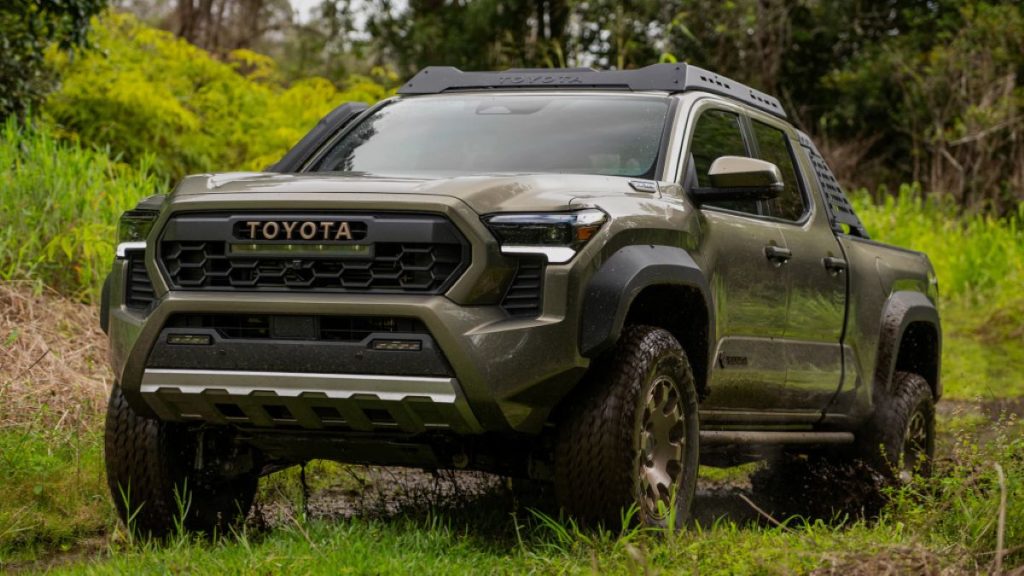
There are no major updates for the 2025 Tacoma, which remains part of the fourth generation introduced in 2024. As Toyota’s smallest pickup truck, the Tacoma slots just below the full-size Tundra in the brand’s lineup.
For buyers who find the Tundra too large or too expensive, the Tacoma is a practical alternative. It’s more than capable of carrying medium-sized loads and can tow a travel trailer or boat without issue.
Off-road capability is a key highlight of the newest Tacoma, particularly in trims like the TRD PreRunner, TRD Off-Road, TRD Pro, and Trailhunter, each designed for specific terrain challenges. At the same time, the Tacoma is equally suited for daily driving around town, offering a well-rounded experience for a variety of uses.
Cost-to-drive estimates for the 2025 Toyota Tacoma SR 2dr Xtracab with a 6.1-foot short bed and 2.4-liter turbocharged four-cylinder engine paired with an eight-speed automatic transmission are based on 15,000 miles of annual driving, with a mix of 55% city and 45% highway driving.
Using an average fuel price of $3.13 per gallon for regular unleaded in North Dakota, the monthly fuel cost is estimated at $172. In comparison, the average monthly fuel cost for compact trucks in the same category is approximately $212.
Full-size trucks have become significantly larger over the past decade, often exceeding the needs of the average truck buyer. The Tacoma counters this trend by offering a more manageable size, which makes it easier to drive and more economical to own.
Despite its smaller stature, it still delivers solid performance for both work and recreation. The new engines introduced in the 2024 redesign enhance the Tacoma’s appeal even further.
The base turbocharged four-cylinder engine and the available i-Force Max hybrid powertrain both offer much-improved power output and fuel economy over the older engines they replace, ensuring that the latest Tacoma feels modern and capable without sacrificing efficiency.
Also Read: Top 10 EV Features That Come in Useful in Daily Commute
Honda Odyssey
The Honda Odyssey continues to be a go-to minivan for many families. It’s praised for its practical features, like dual power-sliding doors, and its strong track record of reliability.
Whether you’re shuttling passengers around town or heading out on a long road trip, the Odyssey offers a high level of comfort and safety. Many owners report their Odysseys lasting up to 300,000 miles, which speaks volumes about its endurance.
The refreshed 2025 Honda Odyssey is built to transport your family in both style and comfort, offering a well-rounded driving experience that blends practicality with sophistication.
Drivers and passengers alike will appreciate the pleasurable driving experience, the innovative Magic Slide second-row seats that enhance interior flexibility, and the overall comfort of the cabin. Additionally, the Odyssey comes loaded with a host of standard features, making it a convenient and well-equipped option right from the base trim.
However, there are a couple of drawbacks. To fully access the vehicle’s cargo space, the second-row seats must be removed—a process that might be cumbersome for some users. Furthermore, the Odyssey still does not offer a hybrid or all-wheel-drive option, which limits its appeal for buyers seeking more fuel-efficient or all-weather capability.
For the 2025 model year, the Odyssey receives several key updates that help modernize its appearance and functionality.

Among the most notable changes are a new 9-inch touchscreen infotainment system and a 7-inch digital instrument cluster, both of which bring a more contemporary and user-friendly interface to the cabin. The exterior also gets a refresh, giving the minivan an updated and more attractive look.
Honda has discontinued the EX trim for 2025, narrowing the lineup slightly, while the Touring and Elite trims benefit from an upgraded rear entertainment system that enhances the in-cabin experience for rear passengers.
The Odyssey continues to seat up to eight people and retains its front-wheel-drive configuration. Fuel economy is rated at 19 mpg in the city and 28 mpg on the highway. Under the hood, the 2025 Odyssey is powered by a 280-horsepower engine, providing reliable and smooth performance for everyday driving needs.
Ford F-150
The Ford F-150 is a full-size pickup known for its durability and strength. It’s a popular choice for those who need a truck that can haul trailers, campers, or RVs with ease.
Typically, the F-150 can last between 150,000 to 200,000 miles. Its rugged construction and ability to handle various types of terrain make it a solid option for drivers who demand performance and resilience from their vehicle.
The Ford F-150 is one of the most iconic and best-selling trucks in the United States, a position it has held for decades due to its blend of rugged capability, everyday comfort, and cutting-edge technology. Part of the Ford F-Series, which dates back to 1948, the F-150 is renowned for its ability to cater to a wide variety of needs.
Whether you’re a contractor, off-road enthusiast, or someone who simply needs a dependable truck for daily use, the F-150 offers an impressive balance. It boasts impressive towing and hauling capabilities, with the ability to tow up to 13,500 pounds and carry more than 3,300 pounds in its bed, making it a go-to choice for people with serious work requirements.
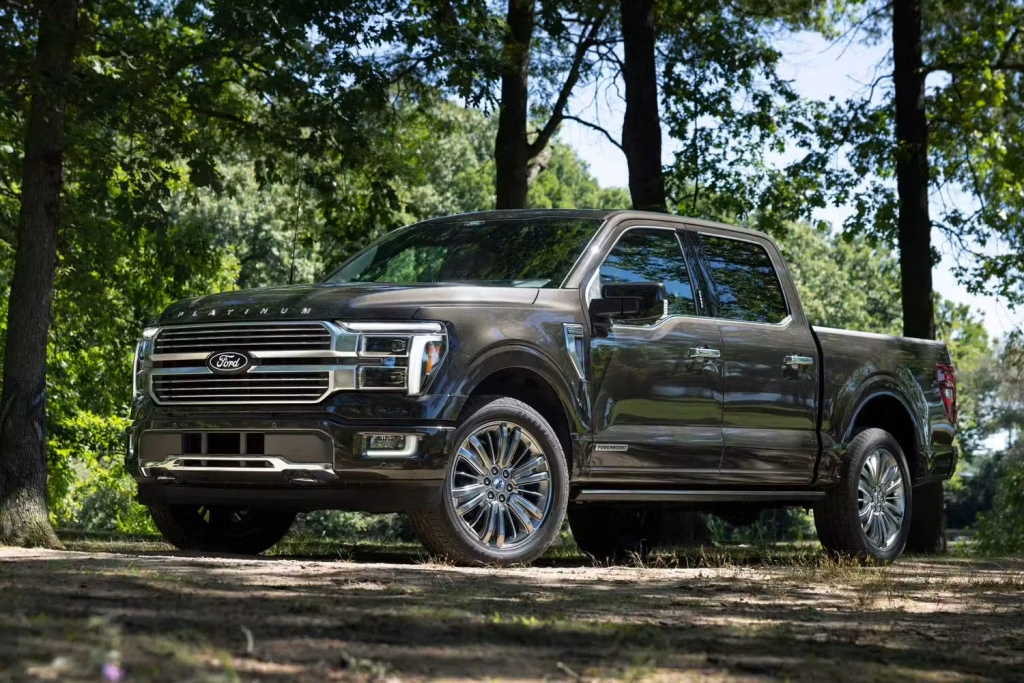
The F-150 lineup includes a variety of engine options, from the 2.7L EcoBoost V6 for those seeking fuel efficiency, to the powerful 5.0L V8 and the PowerBoost hybrid for those looking for more towing and performance power.
In addition, the truck offers luxury features in higher trims, such as massaging seats, a large infotainment screen, and Pro Power Onboard, which allows the truck to function as a mobile generator. With numerous trims available—from the more basic XL to the high-end Platinum and Limited, to the off-road focused Raptor—there’s an F-150 for nearly every type of driver.
However, the F-150 isn’t without its drawbacks. While its capabilities are exceptional, the price can rise quickly as you add options, and higher-end trims can become quite expensive.
Fuel economy can also be an issue, especially for those who regularly tow or haul, as real-world MPG can be underwhelming for such a large vehicle, even with the hybrid powertrain.
Additionally, the ride quality in lower trims, which lack advanced suspension systems, can feel stiff compared to competitors like the Ram 1500, which offers a more refined ride, particularly in trims equipped with air suspension.
Overall, the Ford F-150 is ideal for people who need versatility in their vehicle—those who want a truck capable of heavy-duty tasks but also need comfort for daily driving. With its variety of trims, engines, and configurations, it’s designed to fit a broad range of needs, whether for work, adventure, or family use.
Also Read: 12 Worst GM Cars Ever Built and 10 of the Best
Mazda MX-5 Miata
For those looking for a fun, personality-filled ride that doesn’t break the bank, the Mazda MX-5 Miata is an excellent choice. This sporty roadster is perfect for cruising through mountain roads or along the coast.
In addition to being reasonably priced, it boasts a high reliability score from Consumer Reports. It’s a car that brings joy to driving while also being a smart, reliable investment.
The 2025 Mazda MX-5 Miata continues to be a standout in the sports car market, offering thrilling driving experiences without breaking the bank.
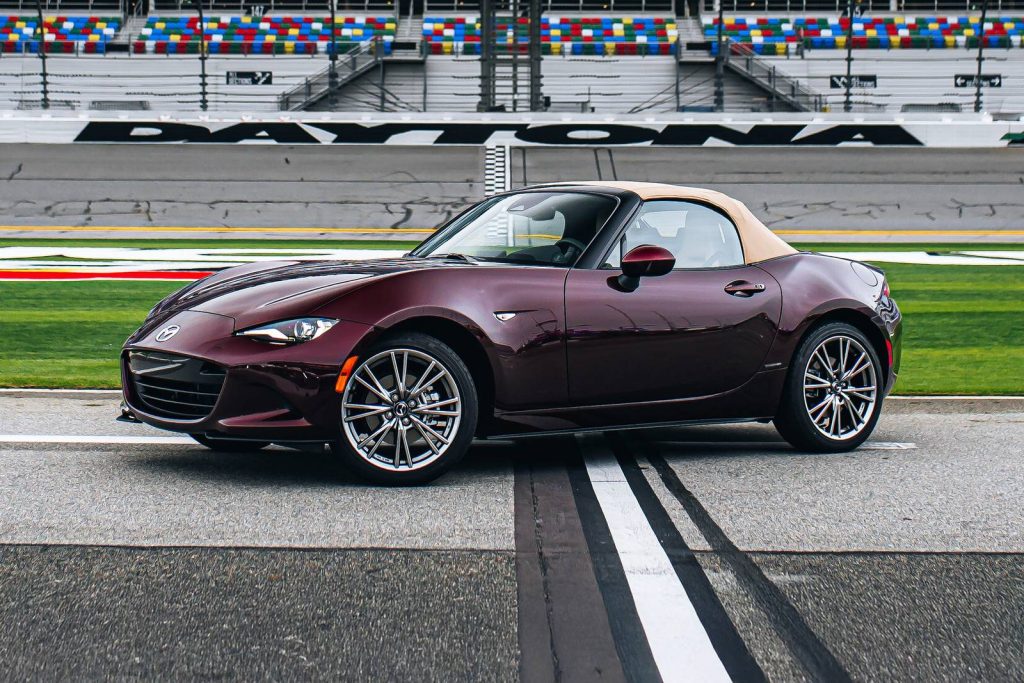
As a lightweight roadster, the Miata delivers raw exhilaration with a focus on driving enjoyment, making it one of the most affordable options for those who crave performance. Despite its small size and limited space, the Miata excels in fuel efficiency and remains one of the most economical sports cars available.
The 2025 model brings a special treat to fans, celebrating the car’s 35th anniversary with a 35th Anniversary Edition. This limited-production model, available only as a soft top with a six-speed manual transmission, will be produced in a batch of just 300 units, adding to its exclusivity.
The Miata has undergone minor updates for the 2024 model year, but the 2025 version highlights its rich legacy while maintaining its fun-to-drive nature. While the cabin is compact, and trunk space is minimal, the Miata makes up for these shortcomings with its engaging driving experience and smooth ride, even at lower speeds.
However, highway driving can be a bit noisy inside the cabin, especially with the top up. Regardless, the Miata remains a beloved choice for enthusiasts who want a pure, enjoyable sports car experience at a reasonable price.
Toyota Tundra
Toyota’s full-size truck, the Tundra, is another model known for exceptional reliability and toughness. It’s not uncommon to hear of Tundras reaching or even exceeding one million miles.
In addition to its long-lasting performance and impressive towing capabilities, drivers appreciate how comfortable it is to drive, whether they’re navigating through city streets or taking it down country roads.
Toyota has faced some challenges with its largest truck, the Tundra, and is now recalling nearly half a million units due to a more straightforward issue, although one that could pose significant risks if not addressed.
This follows a previous massive recall last year, where a manufacturing fault led to problematic engines that Toyota replaced as needed. The latest recall, however, is focused on an issue with the reverse lamps, which may stop working due to possible “moisture intrusion.”
The recall affects approximately 443,000 Tundra owners, spanning model years 2022-2025, regardless of the powertrain configuration. However, it is worth noting that not all affected units were sold in the U.S.
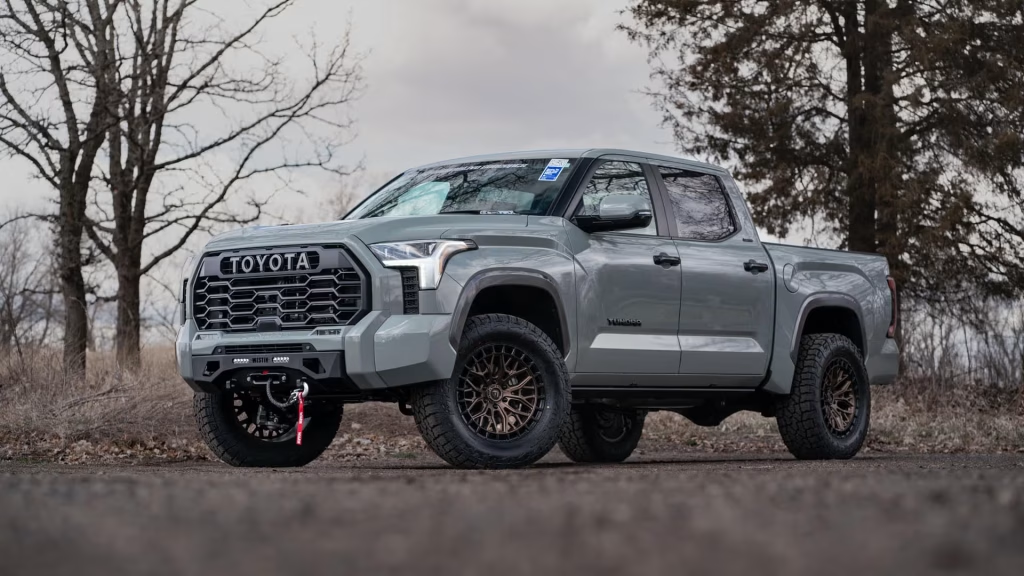
The problem arises from a manufacturing issue where the reverse lamp assemblies use a particular adhesive on the vent patch. This adhesive could allow moisture to penetrate, potentially causing the entire assembly to fail. While this may seem like a minor issue, it can lead to serious safety concerns, particularly when driving at night.
Reverse lights are crucial for illuminating the rear of the vehicle, and they also serve as an indicator to oncoming traffic that the vehicle is backing up. A Tundra without working reverse lights could create a hazardous situation, as the truck would not be able to warn others of its movement.
Toyota has already implemented a remedy for this issue, which includes replacing the faulty reverse lamp assemblies with an improved version at no cost to the owners.
Dealers were notified in the week of May 15, 2025, and affected vehicles will also have their wire harnesses inspected and repaired if corrosion due to moisture is found. If you own a Tundra from the affected model years, it’s recommended to contact your dealership promptly to schedule the necessary repairs.
While Toyota will be notifying the owners of the impacted units, it’s always better to take proactive measures. Those who previously paid for reverse lamp repairs will also be reimbursed for their costs.
Cars That Have A Lot of Play
When people talk about cars that have “a lot of play,” they’re usually referring to vehicles with loose, unresponsive steering or suspension systems. This means there’s a noticeable delay or vagueness between what you do with the wheel or pedals and how the car actually responds.
It’s most common in older cars, trucks, and off-road vehicles, and while sometimes it’s just a design quirk, more often it’s a sign of wear and tear that can become a safety issue.
Jeep Wrangler
One classic example is the Jeep Wrangler, especially models built before 2018. These use a solid front axle and a recirculating ball steering system, which is tough for off-road use but often feels vague and requires constant correction at highway speeds.
Older Wranglers are also infamous for the “death wobble,” a violent front-end shake caused by worn suspension or steering components.
The Jeep Wrangler undeniably maintains its reputation as a classic off-road vehicle. Its large, heavy axles enhance the feeling of imperfection on rough surfaces, causing the body to shimmy in a way that’s not experienced in the more refined and composed Land Rover Defender. There is also a noticeable amount of suspension noise when driving over potholes and raised drain covers.
Additionally, the rugged tyres create significant road noise at higher speeds, which is compounded by the wind noise generated by the boxy body, particularly in hard-top versions. In comparison, even the utilitarian Toyota Land Cruiser offers a quieter, more comfortable ride over long distances.
Despite these noise factors, the Wrangler stands out when compared to the Ineos Grenadier, which lacks steering feel entirely. The Wrangler, however, responds to driver inputs in a notably reliable way.
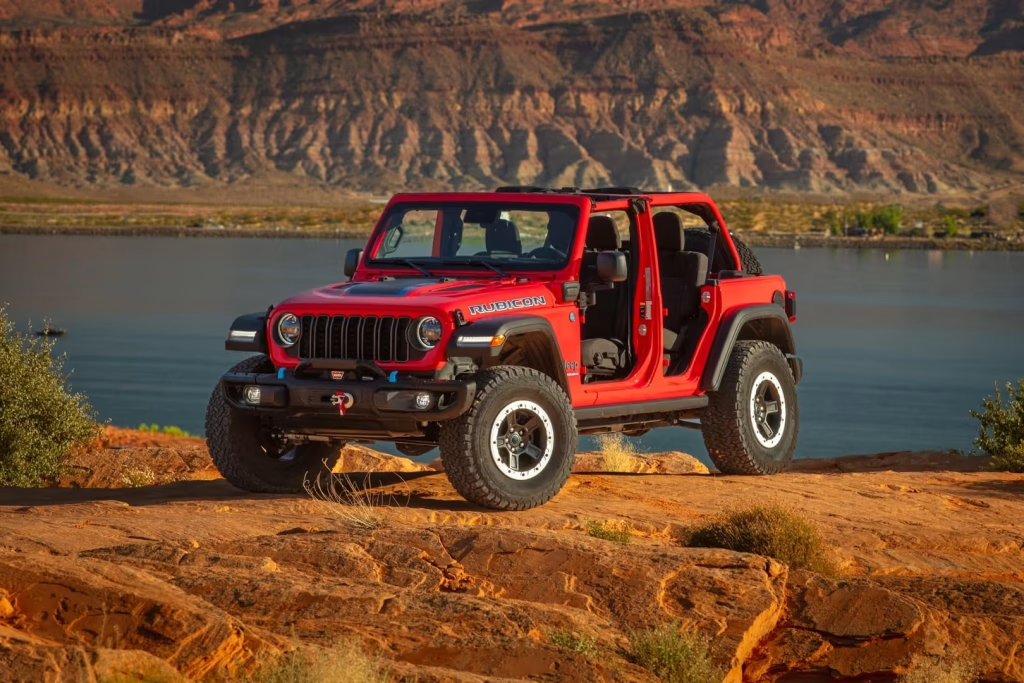
While cornering at even moderate speeds can exceed the tyre’s grip limits, especially with the off-road-focused tyres fitted to Rubicon models, the steering remains transparent, giving a clear sense of how much grip is left.
In the UK, the only engine available for the Wrangler is a 268bhp 2.0-litre turbocharged petrol, paired with an eight-speed automatic gearbox. While it doesn’t have the growl of the six-cylinder engines in the Ford Ranger Raptor or Grenadier, it can accelerate from 0-62mph in 7.2 seconds, making it faster than both of these rivals.
It’s also smoother than the diesel-only Land Cruiser. The only issue with on-road performance is the gearbox’s delayed response to accelerator inputs, but switching to manual mode and using the chunky gear lever to shift gears resolves this issue.
For off-road enthusiasts, the Wrangler features a centre console lever that switches between two- and four-wheel drive, as well as toggling between different 4×4 modes. The lever is stiffer than the gear lever, which adds to the vehicle’s tough, rugged feel.
Once four-wheel drive is engaged, the centre differential can be locked, ensuring the front and rear axles receive equal amounts of power at all times. The low-range gearbox offers more precise control over the accelerator at low speeds and increases the engine’s torque for climbing steep inclines.
This combination proved highly effective on a heavily rutted off-road route at the test track, where the Wrangler easily ascended a rough hill that left both the Grenadier and Defender stuck.
The Rubicon model takes the Wrangler’s off-road capability to the next level. Along with more aggressive tyres, it comes with locking front and rear differentials to further enhance traction on slippery surfaces.
While the idea of manually locking and unlocking differentials might seem daunting, Jeep has simplified the process. To lock both the front and rear differentials simultaneously, all you need to do is flip a rocker switch. Unlocking them is even easier with a large red button marked Off.
While the Grenadier also offers front and rear locking differentials, it requires a multi-step process that can lead to confusion and prevent the system from engaging correctly. The Wrangler’s design is far more user-friendly. Most impressive is the Rubicon’s detachable anti-roll bar, which allows for more suspension travel.
When unlocked, the body remains upright regardless of how rough the terrain becomes, a sensation that is unique to the Wrangler. No other vehicle offers this feature, and when combined with all the other off-road capabilities, it makes the Jeep Wrangler the most capable off-roader currently available.
Chevrolet C/K trucks
Another case is the Chevrolet C/K trucks from the 1970s to 1990s. These full-size pickups are known for their durability, but many suffer from significant play in the steering and suspension if not properly maintained — again due to the older recirculating ball steering and aging bushings or joints.
In response to Ford’s Model TT, Chevrolet introduced its own one-ton truck with the 1918 Chevrolet Model T. Over the years, Chevrolet used various truck names, including the AK Series truck in 1941 and the Advanced Design in 1947.
However, it was with the launch of the Task Force line of trucks in 1955 that Chevrolet began using four-digit model names to differentiate between the various models. For instance, the 3100 was used for the half-ton truck.
For the 1960 model year, Chevrolet completely redesigned its truck lineup, leading to a significant transformation in the pickup truck market. The trucks featured an all-new frame with a dropped center section, which allowed for easier access to the cab without sacrificing ground clearance.
In addition, a new suspension system was introduced, providing a much smoother ride. Up front, Chevrolet replaced the solid axle with independent front suspension, a move that predated Ford’s I-Beam front suspension in the F-Series by five years.
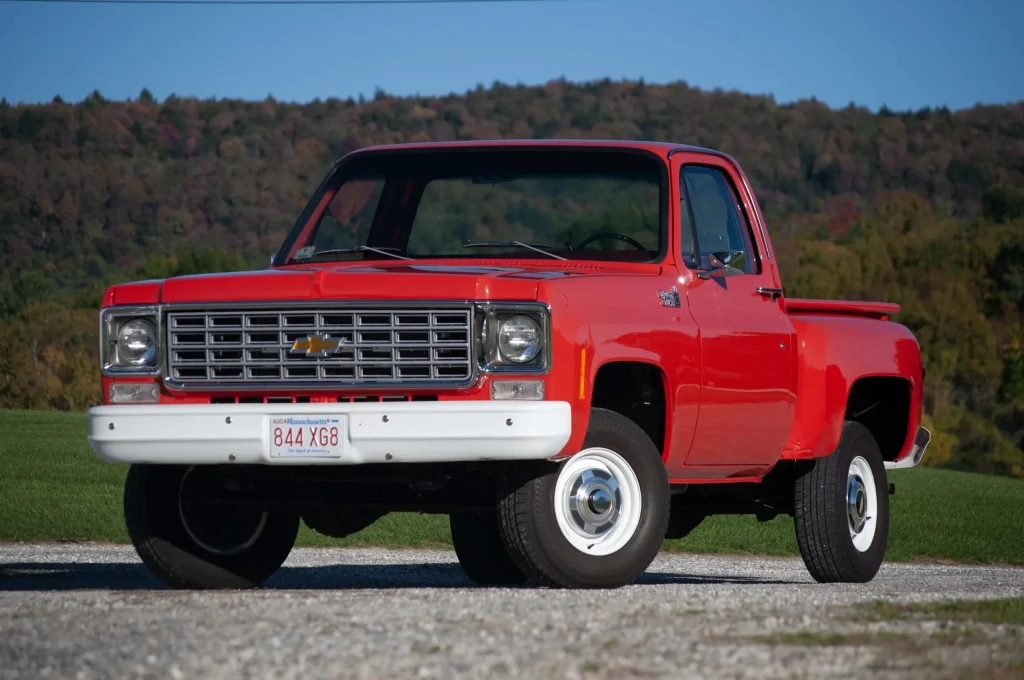
The rear suspension was also upgraded, changing from leaf springs to coil springs with control arms. Interestingly, the GMC versions of these trucks retained the leaf spring setup.
A major innovation during this time was the introduction of a factory-installed four-wheel drive option, replacing the previous “Power-Pack” 4×4 system provided by NAPCO (Northwestern Auto Parts Company). While this new in-house 4×4 option still used a divorced transfer case, it represented a significant shift.
The introduction of the factory 4×4 option also led to a new naming system: C/K with two-digit models. The letter C was used for two-wheel drive trucks, while K was designated for 4×4 trucks.
The 10, 20, and 30 numbers were used to represent half-ton, three-quarter ton, and one-ton capacities, respectively. GMC, which had its own naming system up to this point, also adopted this new naming convention to align with Chevrolet’s models.
Ford Crown Victoria
Luxury sedans like the Ford Crown Victoria or Lincoln Town Car also made this list. These vehicles were built for comfort, not sharp handling, so even from the factory, the steering feel was soft and imprecise. After years of use in fleets like taxis or police cars, many of them developed excessive play due to worn-out suspension parts.
The Ford Motor Company had a successful year in the U.S. automotive market, with deliveries increasing by four percentage points to approximately 2.079 million units. This was a strong performance, especially considering that FCA US LLC saw a 15% decline, delivering around 1.3 million vehicles.
While Ford had a solid showing, other manufacturers performed well too. Toyota Motor North America saw an increase of 3.7%, delivering about 2.333 million units, despite only having two main brands, much like their Detroit counterparts.
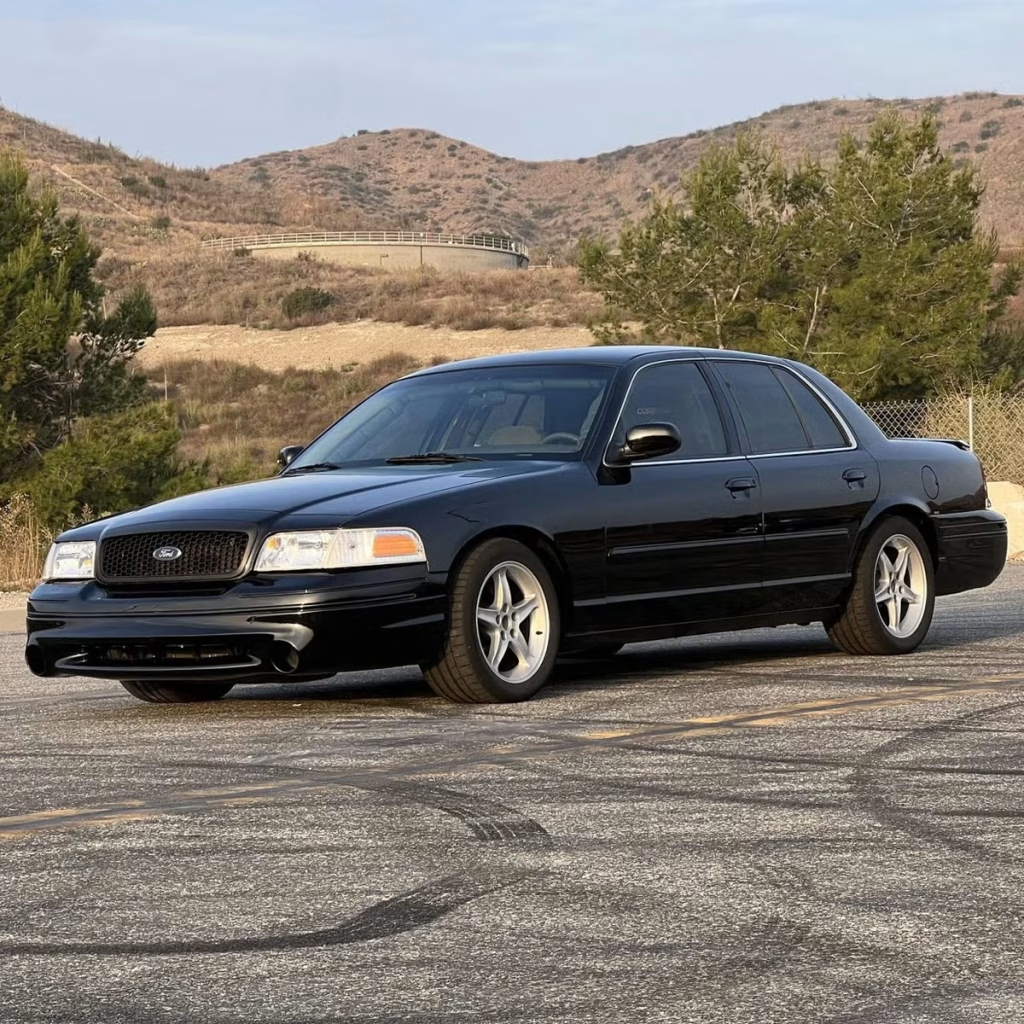
However, General Motors managed to maintain its lead, delivering 2.7 million units, a 4% rise, thus securing its position as the market leader.
As expected, Ford’s trucks played a key role in its success. The Ford F-Series continued to be America’s top-selling pickup and the best-selling vehicle overall. Additionally, the refreshed 2025 Ford Maverick also performed well, showing impressive sales. Unfortunately, the same cannot be said for the increasingly expensive S650 seventh-generation Ford Mustang.
Once the iconic V8 pony and muscle car of the market, the Mustang is facing a tough time, even being outsold by its electric counterpart, the Ford Mustang Mach-E crossover SUV, for the first time. Some critics are suggesting that Ford should retire the Mustang coupe and convertible, possibly preserving them as museum pieces.
Land Rover Discovery II
Similarly, the Land Rover Discovery II has a reputation for slack in both its drivetrain and steering. It’s a capable off-roader, but long-term wear in its complex 4×4 system and steering components leads to a very disconnected feel.
It’s true that at first glance, the newly revised Discovery may appear very similar to its predecessor, largely due to Land Rover’s decision to make only a modest refresh of the original design.
The characteristic stepped roof and Alpine windows remain, a more subtle update rather than a complete overhaul. While this more restrained approach may seem too modest to some, it’s important to recognize that the Series II is far more than just a lightly updated version of the older Discovery.
As the first major redesign of the model since its debut in 1989, this largely all-new vehicle marks a significant step forward, not just for the Discovery, but also for sport/utility vehicle engineering in general.
For starters, every exterior panel on the Series II is new. In addition, the chassis has been reinforced, with a notable 20-percent increase in torsional rigidity.
While the wheelbase remains the same, the overall vehicle length has been extended by 6.5 inches, and its width by 3.8 inches. These size increases contribute to more room inside, notably 5.7 cubic feet of additional cargo space, bringing the total to a generous 41.1 cubic feet behind the rear seats.
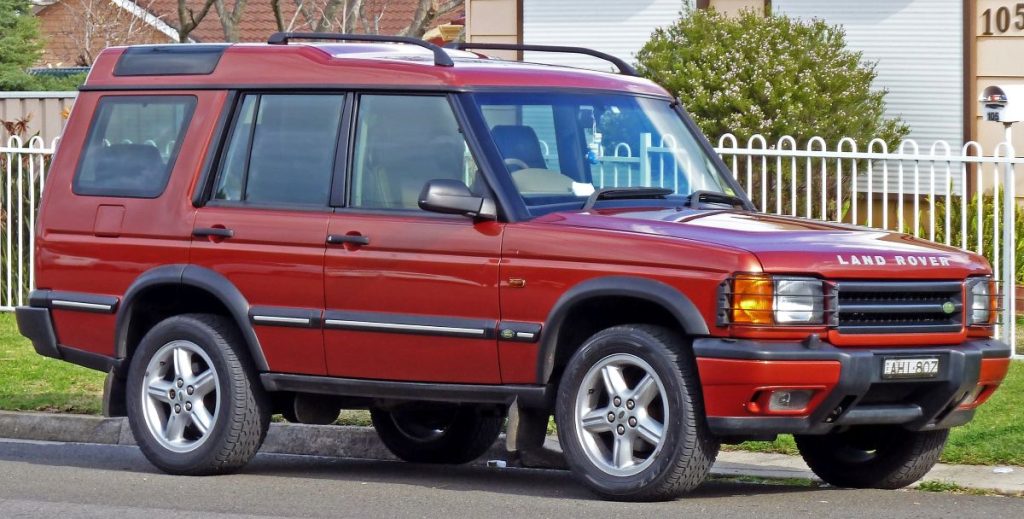
However, the real advancement is found beneath the surface. The Series II integrates a wealth of cutting-edge technology that elevates it to one of the most sophisticated SUVs on the market.
Much of this progress can be attributed to BMW, which acquired the Rover Group in 1994 and invested billions into the company, bringing state-of-the-art engineering, as well as enhanced production and quality control processes. This investment is most evident in the improved suspension and brake systems.
While the Series II retains live axles and coil springs at both the front and rear, the axles have been adapted from the Range Rover, offering a wider span. This adjustment increases the front track by 2.1 inches and the rear track by 2.9 inches, providing the vehicle with a more stable foundation
. Additionally, the suspension system has been fully upgraded and retuned to offer better control, reduced body lean in corners, and an improved ride on paved roads. When driving the Series II back-to-back with the original Discovery, the improvements are immediately apparent.
The Series II boasts quicker handling response, more precise cornering, and a noticeably more stable feel, even during rapid directional changes. While the previous Discovery was starting to fall behind its competitors in terms of on-road handling, the Series II now stands among the best in its class.
Mercedes-Benz W123/W126
Lastly, older Mercedes-Benz models from the 1970s to 1990s, such as the W123 or W126, were engineered for durability and ride comfort. Over time, however, their steering boxes can wear out, leading to notable play at the wheel. While not dangerous when maintained, it gives the car a floaty, imprecise feeling.
The Mercedes-Benz W123 was produced from 1976 to 1986 and is part of the W123 series. The W123 lineup included 4 models and spanned across 2 generations.

The available chassis configurations were the sedan, station wagon, and coupé. Depending on the model, the vehicle came with 2 to 5 doors and could accommodate up to 5 seats. The W123 was offered with petrol or diesel fuel options.
In short, cars with a lot of play tend to feel loose or disconnected on the road, which may be part of their old-school charm — or a sign that something badly needs replacing. Either way, it’s not something you want to ignore, especially if you’re driving at highway speeds or in high-stress conditions.

